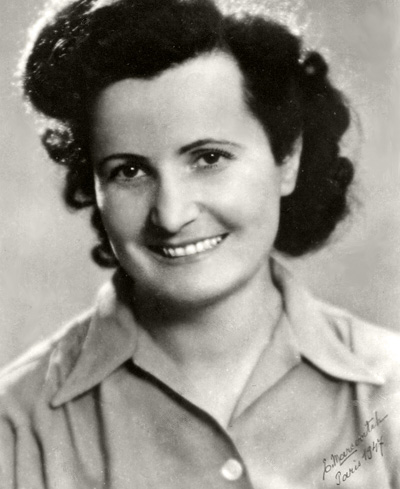Abstract
How many people rescued Jews during the Holocaust? There is no certain answer to this question other than “far too few.” Fewer than 0.5% of the 700 million non-Jews in Nazi occupied Europe helped rescue Jews.
A few exceptional Jewish women, however, went to extraordinary lengths to save the lives of large numbers of Jewish children, while being targets of the Nazi genocide themselves. These rescue attempts occasionally succeeded, sometimes failed, and frequently resulted in the women themselves being murdered.
Few of these women have been recognized or honoured. In their book Holocaust Heroines: Jewish Women Saving Jewish Children, Beverley Chalmers and Dana Solomon challenge this omission, sharing the stories of 108 Jewish women who saved, or attempted to save, large groups of Jewish children before, during or after the Holocaust.
Jewish Women Saving Jewish Children
About a third of Europe’s Jews escaped the Nazi genocide, but only about 10% of Jewish children did so. The precise number of children who survived the war is unknown, although approximately 1.5 million were murdered.
Before the war, during the Nazi era, there were few large-scale attempts to save children, as few truly anticipated the horrors that Hitler’s ideology was about to unleash on Jews across Europe. After Hitler came to power and enacted laws restricting Jewish life, people gradually came to see how dangerous the regime was. By the later years of the 1930's, programs to get Jewish children out of Germany started to emerge. Gilbert and Elenor Kraus in the USA, managed to find a loophole in the restrictive quota laws limiting immigration to the States, by utilizing visas that had been granted for Jewish immigrants but had not yet been taken up by their applicants in Europe. They were able to bring fifty children to America on these visas. Recha Freier in Germany, a Rabbi’s wife, helped hundreds of Jewish youth, who were excluded from jobs in Germany, to emigrate to British Mandatory Palestine and to settle on kibbutzim. Maria Schmolka in Czechoslovakia, and Rebecca Sieff in the UK collaborated to implement the Kindertransport, including over 600 children from Czechoslovakia. .
When war broke out in 1939, and later, as the Nazi decision to implement the “Final Solution” was seriously implemented, the rescue of children became a major concern. Hiding children became a priority, and for some, smuggling them out of Nazi occupied countries to safer neighbours such as Switzerland or Spain, became the primary rescue approach. Women in many countries hid Jewish children. Widespread organized activities to do so were particularly extensive in France. Multiple women in France collaborated in hiding children in Christian families or institutions. Notable among them were Andrée Salomon and Margot Cohn. Odette Rosenstock, and Moussa Abadi, worked together, in Nice, to rescue over 500 children although they never talked about their activities after the war. Some, like Marianne Cohn and Mila Racine smuggled children across borders to Switzerland and Spain, Other women ran Jewish orphanges in Belgium, under the direct control of the SS, including Marie Albert-Blum and Ruth (and Jonas) Tiefenbrunner. Some children rescued other children including Fanny Eyal, Sima Fitterson, Fanya Gimpel and Roza Rubenchik in Belorussia and France. When escape for children became impossible, such as when incarcerated in labour and concentration camps, relieving their distress became the only available means of providing psychological relief from their terrifying living conditions. Notable among these saviours were Friedl Dicker-Brandeis who taught children art and encouraged them to escape emotionally from their dismal ghetto environment in Theresienstadt, and Hadassah Rosensaft, who organized a children’s home in Bergen-Belsen where she and her assistants cared for hundreds of children.
At the war’s end, a different type of rescue attempt was required. Thousands of Jewish children were left as orphans, and/or as hidden children in Christian families or religiously-based institutions. Retrieving these children and facilitating their resumption of a Jewish life became a central concern that was fraught with ethical, religious, and moral considerations. Notable rescuers were Sarah Shner Nishmit, Recha Sternbuch and Devora Fleischer. Lena Küchler-Silberman cared for 100 children in Poland and eventually managed to return them to Israel: a remarkable feat. At the end of the war, Ruth Gruber was sent by the USA Secretary of the Interior, Harold Ickes, to accompany 1,000 mostly Jewish but including some Christian refugees from Italy to the USA where they were settled in Oswego, New York State. With her continued assistance, they were eventually allowed to settle in the USA.
These twenty or so women, and a further eighty or more are noted in Chalmers and Solomon’s book, as Holocaust heroines.
Bibliography
Bogner, Nahum. At the Mercy of Strangers: The Rescue of Jewish Children with Assumed Identities in Poland. Jerusalem: Yad Vashem, 2009.
Chalmers, Beverley, and Dana Solomon. Holocaust Heroines: Jewish Women Saving Jewish Children. Surrey, UK: Grosvenor House Publishers, 2024.
Henry, Patrick. We Only Know Men. Washington, DC: The Catholic University of America Press, 2007.
USHMM. "Plight of Jewish Children." USHMM. Accessed 16 November, 2015. www.ushmm.org/wic/en/article.php?ModuleId=10006124.
Film
Lena: My 100 Children. Moonlight Productions USA, Director Ed Sherin, 1987. 95 mins
https://www.yadvashem.org/articles/general/kichler-silberman.html
Lena Küchler-Silberman

By Unknown author - [1], Public Domain, Link
Contributed by:
Beverley Chalmers (DSc(Med); PhD)
Steering Committee: Women in the Holocaust international Study Centre (WHISC), Israel
Kingston, Ontario, Canada